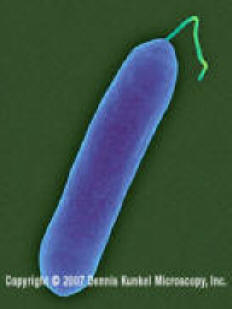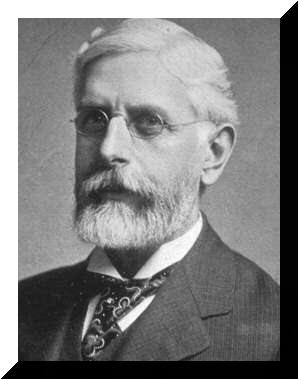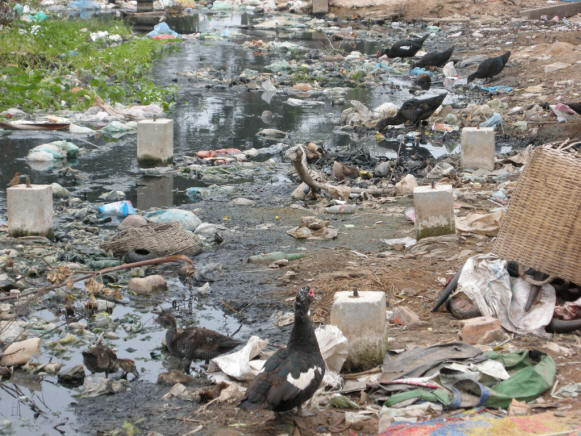You can't find us

The man of the hour
Dr. Daniel Salmon, an American
bacteriologist, first discovered a bacillus which caused ‘swing plague.’
The
strain of bacteria was located in the intestinal tract of a pig.
At the time, 1880's, this bacteria
was named Bacterium suipestifer.
It was later renamed Salmonella after Dr. Salmon.
7 days and 7 nights
Salmonella
enteritidis
most likely
originated from an antibiotic used in the poultry industry known
as prophylaxis. This
antibiotic led to the removal of two
Salmonella strains,
S. gallinarum and S. pullorum.
These strains cause diarrhea in chicks but had no
apparent effect on humans.
With the eradication of these two other strands, a vacant
niche was created which allowed for
Salmonella enteritidis to flourish and fill the missing niche.
Thus, humans are in a sense responsible for the invasion
of S. enteritidis and
symptoms found in humans.
Keep looking
Bacterial
strains of Salmonella
enteritidis may be found in and transmitted through poultry,
reptiles, and various other animals.
Salmonella
is
primarily found in animal intestines.
As a result, most human cases are reported after eating
animal products such as dairy, poultry, eggs, and meat.
It is also
interesting to note that
Salmonella has been discovered to exist as free-living
organisms that can reproduce under natural conditions.
Salmonella can also be found existing outside of an
animal host such as water, soil, or sewage.
The following table shows the amount of days that Salmonella
can stay alive when located in different habitats.
|
Days Remaining Viable: |
Location: |
|
89 |
Tap water |
|
115 |
Pond water |
|
120 |
Pasture soil |
|
280 |
Garden soil |
Thus, water,
especially if polluted, also helps to spread the
bacteria.


